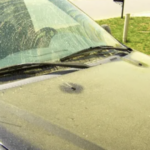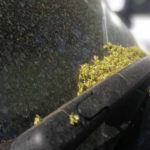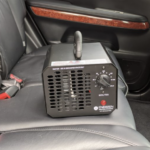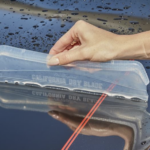Best Ways to Maintain a Classic Car’s Paint and Interior
Owning a classic car in Orlando, Winter Park, and Kissimmee is a privilege, but maintaining its pristine condition requires extra care. The Florida climate, with its intense heat, high humidity, and frequent rain, can take a toll on vintage vehicles. Without proper maintenance, the paint can fade, the interior can crack, and moisture can lead to rust and mold buildup. Protecting your classic car’s paint and interior is crucial to preserving its value and appearance for years to come.
This guide explores the best practices for maintaining the paint and interior of a classic car while ensuring it stays in show-ready condition.
The Challenges of Maintaining Classic Cars in Orlando’s Climate
Classic cars require specialized care to combat the effects of the sun, humidity, and occasional heavy rain. Unlike modern vehicles with advanced protective coatings and synthetic materials, classic cars often feature older paint formulations and delicate interiors that need additional preservation techniques.
Common environmental threats to classic cars include
- Ultraviolet rays from the sun that cause paint fading and oxidation
- High humidity that leads to mold, mildew, and interior damage
- Heavy rainfall that increases the risk of rust formation
- Road debris and pollutants that degrade the paint over time
How to Protect a Classic Car’s Paint
Wash Regularly with Gentle Products
Classic cars require a gentle touch when it comes to cleaning. Harsh detergents and abrasive brushes can strip wax, dull paint, and cause micro-scratches. Instead, use a pH-balanced car shampoo, a microfiber wash mitt, and a two-bucket method to minimize contamination.
Steps for proper washing include
- Rinse the car thoroughly to remove loose dirt and debris
- Wash using a clean microfiber mitt and mild car shampoo
- Dry with a high-quality microfiber towel to prevent water spots
Apply High-Quality Wax or Sealant
A protective wax or paint sealant acts as a barrier between your classic car’s paint and the elements. This helps prevent oxidation, UV damage, and contamination from dirt and pollutants. For maximum protection, apply a high-quality carnauba wax every two to three months or opt for a synthetic sealant that lasts longer.
Store the Car Properly
Proper storage is essential for protecting classic cars from the harsh Orlando climate. If possible, keep your vehicle in a garage with climate control to regulate temperature and humidity. If garage space is not available, use a high-quality, breathable car cover to shield against dust, moisture, and UV rays.
Use Paint Protection Film for Added Security
For classic cars that are driven frequently, applying paint protection film on high-impact areas like the front bumper, hood, and fenders can prevent rock chips and scratches. This invisible layer adds an extra level of protection without altering the car’s original paint.
Schedule Professional Auto Detailing and Paint Correction
Over time, even well-maintained classic cars can develop swirl marks and minor imperfections. Professional paint correction can restore the original shine and remove oxidation, improving the overall appearance. Regular professional Orlando auto detailing helps keep the paint in top condition while extending its longevity.
How to Maintain a Classic Car’s Interior
Condition Leather and Vinyl Surfaces
Many classic cars feature leather or vinyl interiors that are susceptible to cracking and drying out over time. To keep them in excellent condition, use a high-quality leather conditioner or vinyl protectant. Applying these products regularly helps prevent fading and brittleness while keeping seats soft and supple.
Keep Fabric Upholstery Clean and Fresh
For classic cars with fabric seats or carpeting, routine vacuuming and spot cleaning are essential. Use a fabric-safe cleaner to remove stains and apply a fabric protector to help repel spills and dirt. Keeping windows slightly cracked while in storage can also help reduce humidity buildup that causes musty odors.
Protect the Dashboard and Trim
The sun’s UV rays can cause dashboards and trim pieces to crack and fade. Using a UV-protectant interior dressing helps prevent damage while maintaining a fresh and natural look. For wood or chrome trim, use appropriate cleaning and polishing products to enhance their luster and prevent oxidation.
Control Moisture to Prevent Mold and Mildew
Humidity can be a classic car’s worst enemy, leading to mold growth and interior deterioration. To prevent moisture buildup
- Store the car in a dry, ventilated area
- Use silica gel packs or moisture absorbers inside the cabin
- Run a small fan periodically in the storage space to improve air circulation
Regularly Inspect Seals and Weatherstripping
Worn-out seals and weatherstripping can allow water to seep into the interior, leading to rust and mold issues. Check all door, window, and trunk seals for signs of wear, and replace them as needed to ensure a tight, moisture-resistant fit.
Preventing Rust and Corrosion
Classic cars, especially those with older metal frames, are more prone to rust and corrosion than modern vehicles. Preventive measures can help protect the undercarriage and exposed metal parts from damage.
Apply Rust Inhibitor Treatments
Using a rust inhibitor on vulnerable areas such as wheel wells, undercarriages, and door sills helps prevent corrosion from developing. These treatments create a protective layer that repels moisture and road salt.
Keep the Undercarriage Clean
Dirt, road grime, and water accumulation can lead to rust in hard-to-see areas. Regularly washing the undercarriage, especially after driving in wet conditions, helps prevent corrosion from forming over time.
Perform Regular Inspections
Routine inspections are crucial to catching rust formation early. If any rust spots appear, address them immediately with rust removal treatments and protective coatings to prevent further damage.
Maintaining a classic car’s paint and interior requires dedication and attention to detail. By following a proactive maintenance routine, you can ensure your vintage vehicle remains in top condition despite Orlando’s challenging climate. Regular washing, waxing, and proper storage are key to preserving the paint, while conditioning leather, protecting upholstery, and controlling moisture keep the interior looking its best.
For added protection, professional detailing, paint correction, and rust prevention measures can help extend the life of your classic car. Whether you drive your classic car daily or keep it as a prized showpiece, these best practices will help maintain its beauty and value for years to come.
Leave a Comment Cancel Comment
Book Orlando Mobile Detailing
Search
Latest Post
-
 The Cost of Neglect: Why Regular Aircraft Detailing Saves Money in the Long Run
February 14, 2025
The Cost of Neglect: Why Regular Aircraft Detailing Saves Money in the Long Run
February 14, 2025
-
 Why Car Washes Aren’t Enough to Combat Pollen Damage
February 13, 2025
Why Car Washes Aren’t Enough to Combat Pollen Damage
February 13, 2025
-
 Orlando’s Pollen Problem: When Is It the Worst and How It Affects Your Car
February 13, 2025
Orlando’s Pollen Problem: When Is It the Worst and How It Affects Your Car
February 13, 2025
-
 How Ozone Generators Eliminate Stubborn Car Odors in Orlando
February 12, 2025
How Ozone Generators Eliminate Stubborn Car Odors in Orlando
February 12, 2025
-
 Why a Water Blade and Chamois Beat Towels Every Time!
February 9, 2025
Why a Water Blade and Chamois Beat Towels Every Time!
February 9, 2025
